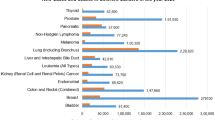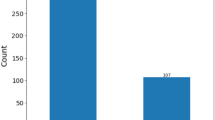Abstract
Gene selection methods are critical in cancer classification, which depends on the expression of a small number of biomarker genes, which have been a significant issue of enormous recent studies. Microarray technology allows generating tumors gene expression datasets. Cancer classification based on these datasets commonly has a kind of small sample size against the number of genes involved and includes multiclass categories. In this paper, grey wolf algorithm was used for extracting notable features in the pre-processing stage, and deep neural network (DNN) was used as deep learning for improving the accuracy degree of cancer detection from three datasets, i.e., STAD (Stomach adenocarcinoma), LUAD (lung adenocarcinoma) and BRCA (breast invasive carcinoma). The proposed method achieved the highest accuracy for these three datasets. The proposed method was able to achieve accuracy close to 100. Furthermore, the proposed method was compared with linear support vector machine classification, RBF, the nearest neighbor, linear regression, one vs. all, Naive Bayes, and decision tree algorithms. The proposed method had 0.57 improvement on the LUAD dataset, 1.11 optimization on the STAD dataset, and 0.78 development on the BRCA dataset.






Similar content being viewed by others
References
Abdel-Zaher AM, Eldeib AM (2016) Breast cancer classification using deep belief networks. Expert Syst Appl 46:139–144
Aggarwal CC (2018) Neural networks and deep learning: a textbook. Springer, 497 p
Agrawal S, Agrawal J (2015) Neural network techniques for cancer prediction: a survey. neural network techniques for cancer prediction: a survey. Proced Comput Sci 60:769–774
Bunz F (2016) Principles of cancer genetics. Springer, p 343
Butterfield LH, Kaufman HL, Marincola FM (2017) Cancer immunotherapy principles and practice. Demos Medical, p 920
Chen D, Liu Z, Ma X, Hua D (2005) Selecting genes by test statistics. J Biomed Biotechnol 2005(2):132–138
Chen H, Zhang Y, Gutman I (2016) A kernel-based clustering method for gene selection with gene expression data. J Biomed Inform 62:12–20
Dashtban M, Balafar M (2017) Gene selection for microarray cancer classification using a new evolutionary method employing artificial intelligence concepts. Genomics 109(2):91–107
Dong H, Markovic SN (2018) The basics of cancer immunotherapy. Springer, New York, p 172
Dwivedi AK (2018) Artificial neural network model for effective cancer classification using microarray gene expression data. Neural Comput Appl 29(12):1545–1554
Fakoor R, Ladhak F, Nazi A, Huber M (2013) Using deep learning to enhance cancer diagnosis and classification. In Proceedings of the international conference on machine learning. New York, USA: ACM
Frigui H, Nasraoui O (2000) Simultaneous clustering and attribute discrimination. Ninth IEEE Int Conf Fuzzy Syst. https://doi.org/10.1109/FUZZY.2000.838651
Gao L, Ye M, Lu X, Huang D (2017) Hybrid method based on information gain and support vector machine for gene selection in cancer classification. Genom Proteom Bioinform 15(6):389–395
Gray JW, Collins C (2000) Genome changes and gene expression in human solid tumors. Carcinogenesis 21:443–452
Guia JM, Devaraj M, Leung CK (2019) DeepGx: deep learning using gene expression for cancer classification. In: ACM 2019 IEEE/ACM international conference on advances in social networks analysis and mining. https://doi.org/10.1145/3341161.3343516
Knudson AG (2000) Chasing the cancer demon. Ann Rev Genet 34:1–19
Lee CP, Leu Y (2011) A novel hybrid feature selection method for microarray data analysis. Appl Soft Comput 11(1):208–213
Liu S, Xu C, Zhang Y, Liu J, Yu B, Liu X, Dehmer M (2018) Feature selection of gene expression data for Cancer classification using double RBF-kernels. BMC Bioinformatics 19:396
Lo SB, Lou SA (1995) Artificial convolution neural network techniques and applications for lung nodule detection. IEEE Trans Med Imaging 14(4):711–718
Lu S, Lu Z, Zhang Y-D (2018) Pathological brain detection based on alexnet and transfer learning. J Comput Sci. https://doi.org/10.1016/j.jocs.2018.11.008
Mirjalili S, Mirjalili SM, Lewis A (2014) Grey wolf optimizer. Adv Eng Softw 69:46–61
Mishra S, Shaw K, Mishra D (2012) A new meta-heuristic bat inspired classification approach for microarray data. Proc Technol 4:802–806
Moslehi F, Haeri A (2019) A novel hybrid wrapper–filter approach based on genetic algorithm, particle swarm optimization for feature subset selection. J Ambient Intell Human Comput 11:1105–1127
Motieghader H, Ali Najafi A, Sadeghi B, Masoudi-Nejad A (2017) A hybrid gene selection algorithm for microarray cancer classification using genetic algorithm and learning automata. Inform Med Unlock 9:246–254
Olyaee S, Dashtban Z, Dashtban MH (2013) Design and implementation of super-heterodyne nano-metrology circuits. Front Optoelectron 6(3):318–326
Peng H, Long F, Ding C (2005) Feature selection based on mutual information criteria of max-dependency, max-relevance, and min-redundancy. IEEE Trans Pattern Anal Mach Intell 27(8):1226–1238
Ram M, Najafi A, Shakeri MT (2017) Classification and biomarker genes selection for cancer gene expression data using random forest. Iran J Pathol 12(4):339–347
Rani MJ, Devaraj D (2019) Two-stage hybrid gene selection using mutual information and genetic algorithm for cancer data classification. J Med Syst 43(8):235
Sayed S, Nassef M, Badr A, Farag I (2019) A nested genetic algorithm for feature selection in high-dimensional cancer microarray datasets. Expert Syst Appl 121:233–243
Sharma A, Paliwal KK (2008) Cancer classification by gradient LDA technique using microarray gene expression data. Data Knowl Eng 66(2):338–347
Shekar BH, Dagnew G (2019) L1-regulated feature selection and classification of microarray cancer data using deep learning. In: Proceedings of 3rd international conference on computer vision and image processing, pp 227–242
Tabakhi S, Najafi A, Ranjbar R, Moradi P (2015) Gene selection for microarray data classification using a novel ant colony optimization. Neurocomputing 168:1024–1036
Tavakoli N, Maryam Karimi M, Norouzi A, Karimi N, Samavi S, Soroushmehr SMR (2019) Detection of abnormalities in mammograms using deep features. J Ambient Intell Hum Comput. https://doi.org/10.1007/s12652-019-01639-x
Varadharajan R, Priyan MK, Panchatcharam P et al (2018) A new approach for prediction of lung carcinoma using backpropagation neural network with decision tree classifiers. J Ambient Intell Human Comput. https://doi.org/10.1007/s12652-018-1066-y
Wang Y, Tetko IV, Hall MA, Frank E, Facius A, Mayer KFX, Mewes HW (2005) Gene selection from microarray data for cancer classification—a machine learning approach. Comput Biol Chem 29(1):37–46
Wilmott P (2019) Machine learning: an applied mathematics introduction. Panda Ohana Publishing, p 242
Yang J, Liu YL, Feng CS, Zhu GQ (2016) Applying the fisher score to identify alzheimer’s disease-related genes. Genet Mol Res 15(2):gmr15028798
Young RA (2000) Biomedical discovery with DNA arrays. Cell 102:9–15
Zhou M, Luo Y, Sun G, Mai G, Zhou F (2015) Constraint programming based biomarker optimization. Biomed Res Int 2015:910515
Author information
Authors and Affiliations
Corresponding author
Additional information
Publisher's Note
Springer Nature remains neutral with regard to jurisdictional claims in published maps and institutional affiliations.
Rights and permissions
About this article
Cite this article
Hajieskandar, A., Mohammadzadeh, J., Khalilian, M. et al. Molecular cancer classification method on microarrays gene expression data using hybrid deep neural network and grey wolf algorithm. J Ambient Intell Human Comput 14, 5297–5307 (2023). https://doi.org/10.1007/s12652-020-02478-x
Received:
Accepted:
Published:
Issue Date:
DOI: https://doi.org/10.1007/s12652-020-02478-x




